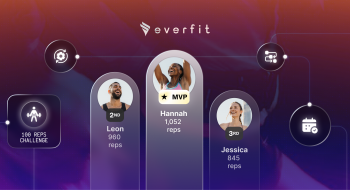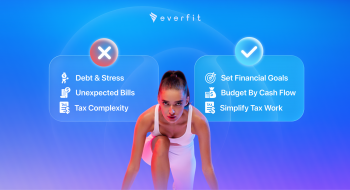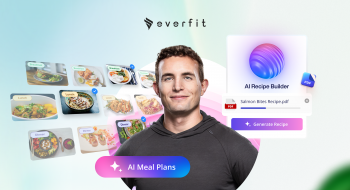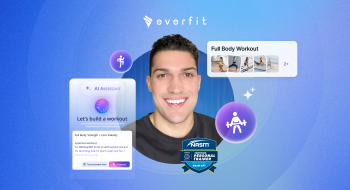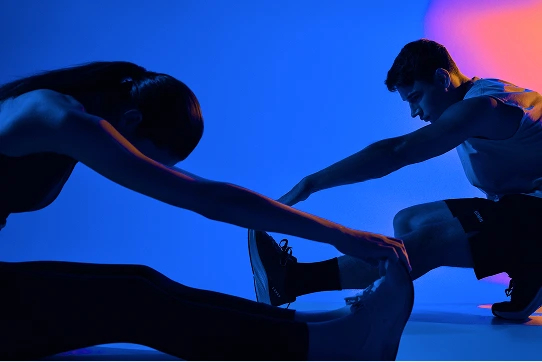Trevor Short is an exercise physiologist at the University of Hawaii, previous coach to NFL / Olympic athletes, & previous COO of a multi-million dollar training studios. Now he’s teaching you the essential concepts of designing a fitness program. You’ll learn how to perform a needs analysis & a comprehensive assessment, the foundational principle of designing a fitness program, and ancillary topics in exercise prescription. Learn the essentials of programming to the next level with these key considerations.
Transcript
Then we’re going to transition into some ancillary topics and exercise prescription.
All right, so let’s cruise into set progression. So training sets should transition from a warm up load to a working set load. And what I’m really getting here to like, what I’m really getting to here is that exercise prescription to follow a pattern of building up to a specific workload. And what that means, what we’re getting to is, you don’t want to just start someone out and say, “Okay, I want you to do three sets of five at 85% of your max”. And you just load up the bar and get them into it, we need warm up loads, we need movement prep, we need some type of exercise exercises previous to work that individual up to that working set load. So if you’re working sets, if you want to have an individual do three sets of five at a working load at 85%, you might actually have six sets of five prescribed, one set, set one might be 50% for five. Set two might be 60%. Set three might be 70%. And then set four they’re at 85%. But training sets should transition from a warm up load to the working set load throughout the course of someone’s training session. So an example here is using RPE. As I talked about before, set one six out of 10, set two seven out of 10, set three eight out of 10. Okay, so progressing, progressing in intensity each set..
Okay, so some other important ancillary topics, we have progression and regression, so progression and regression. So basically, anytime that you prescribe an exercise to someone, you always want to think about a progression or regression. And reason being is that, basically, you want to have a harder exercise on deck as well as an easier exercise on deck because you want the athlete or individual, right, so if you prescribe something that doesn’t go as planned, or it’s too easy for them, or it’s too hard for them, you want to be able to have something in your pocket, that’s basically the same movement, right? Or same, yea same movement, but slightly different load or take weight off the bar or whatever that is. So a good example of this would be if you prescribe somebody a, let’s say, set like a mini side plank with abduction, so they’re on their side and the side plank position, the bottom legs bent, and they’re lifting their top leg up and down off the ground. And for one individual, and let’s say it’s a group class or one client, you prescribe them the same program.
It’s too easy. Okay, let’s get into a full plank position to a four side plank with abduction. Increase the intensity, that’s your progression. Let’s say, X athlete is having a hard time with that movement, you can regress the movement by having them lay all the way down onto their side, head is basically resting on the arm. And now they’re going through abduction from the sideline position without having to stabilize through the plank. So having progression or regression on deck is critical.
Everfit also has space for alternate exercises. So the reason to prescribe alternate exercises, this might be based on equipment, injury history, or preferences. And a good example here is a barbell front squat to a goblet squat. So, let’s say for example, in your programming, you have, you want to train someone in their squatting pattern specifically if anterior chain loaded, squatting pattern, however, you prescribe it to this individual and they’ve been going to a gym but they’re traveling, the travel gym that they’re at, doesn’t have barbell, okay, so you can have in your program design, alternate exercise for goblet squat, therefore, they know “Okay, no worries, I’m just gonna grab a 60 pound dumbbell, hold it by the sides, and I’ll go through this front squat movement”. This will still load the movement, but it’ll be an alternate exercise based on their equipment. They might also have an injury history, for example, a lot of people get injured deadlifting, they might not want to do a bilateral barbell, deadlift, but they might be open to doing a single leg RDL with a kettlebell or something somewhere, okay. And also preferences as well. So having an alternate exercise on deck is also really critical for effective program design.






